Volvo XC60 Recharge Luggage Test: How much cargo space?

Volvo provides an unmatched amount of cargo area measurements for its vehicles, including various lengths, widths, heights and volumes. There are 24 total data points available, as opposed to the usual two, maybe three. If every car brand did this, I wouldn’t have a job as Senior Chief Luggage Testing Engineer at Large. As I’ve shown time and again, those two or three volume amounts do not explain factors like cargo area shape or indicate whether X-factors like under-floor storage areas are counted. Volvo effectively does, albeit on its press website. That’s OK, anyone can access it, so here you go!
That said, let’s take a look at the Volvo XC60 Recharge. The official “SAE J1100” cargo volume measurement behind the raised back seat is 25.8 cubic-feet. That’s a solid number for a luxury compact SUV, but would be below average for a non-luxury model (the best-sellers are in the low 30s). Notice that there aren’t separate numbers for the mild-hybrid “regular” XC60s and this plug-in hybrid XC60, just that single 25.8 number. Diving into those subsequent measurements you normally don’t get reveals there is in fact a difference that I noticed while doing this test.
Here’s the cargo area. Seems normal enough, right? Let’s look closer.
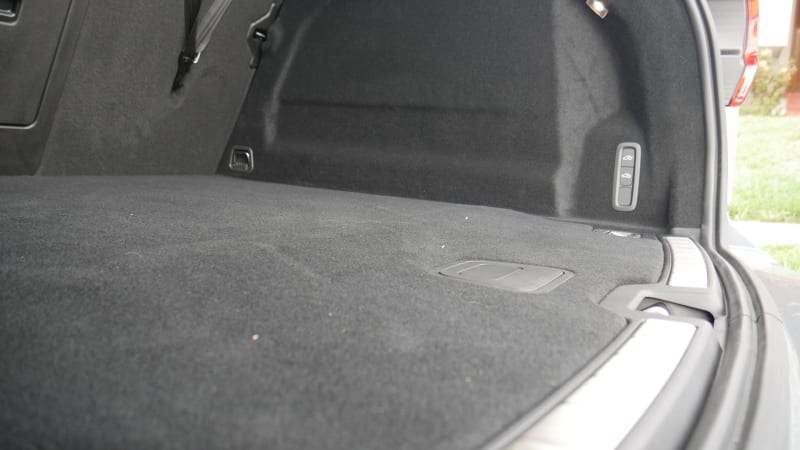
See that ever-so-slight ramp? That’s the reason the deep-dive Volvo measurements indicate the Recharge has half a cubic-foot less cargo space than other XC60s. Those same deep-dive specs also indicate it lacks a spare tire.
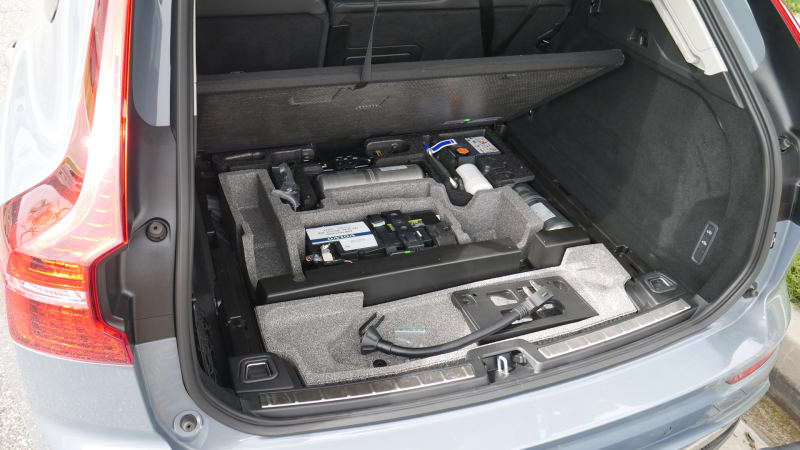
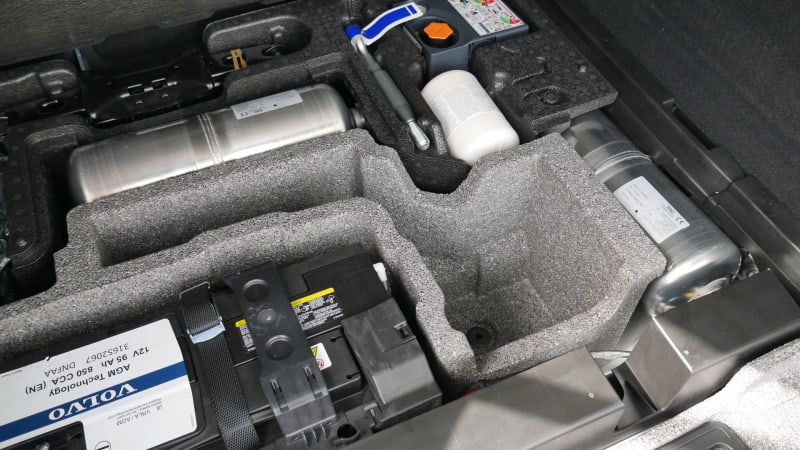
Instead there’s a big battery down there with various other things on top, including those big-old cylinders that sure seem to be the compression tanks for this car’s self-leveling rear air suspension.
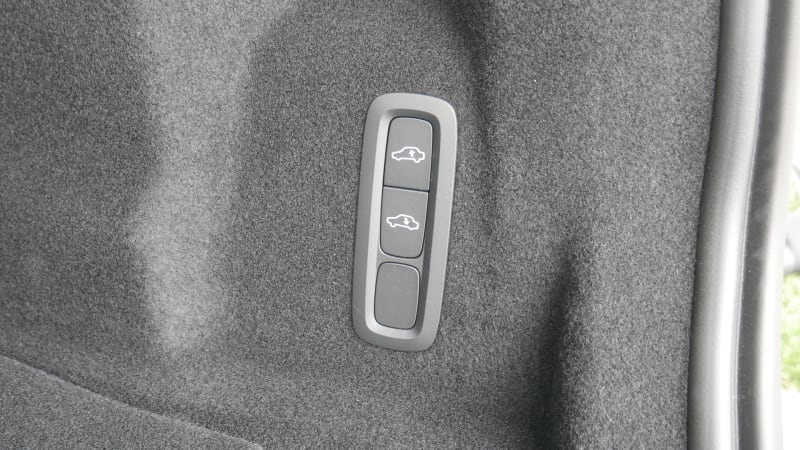
The air suspension also allows you to raise and lower the car with these buttons for easier loading.
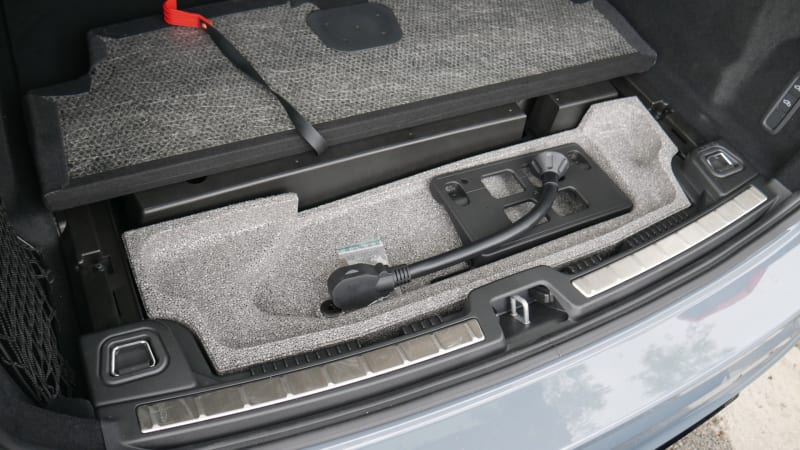
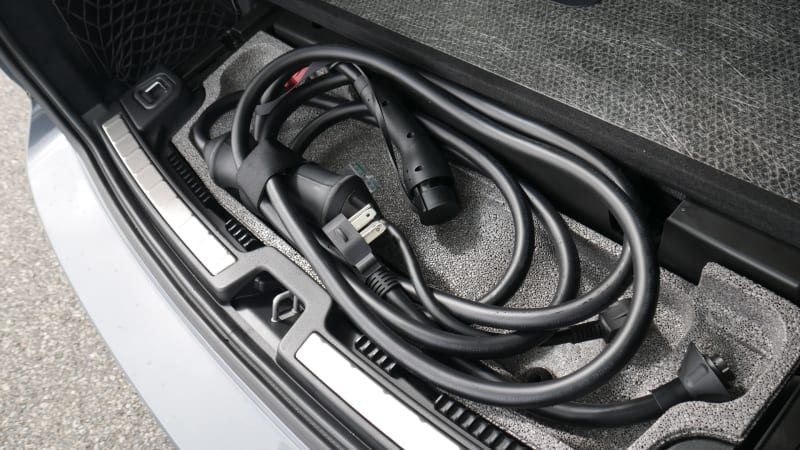
There are also various bins down there of nominal value. None are big enough to carry the charge cord, so that will either need to live in the cargo area or your garage. You never need to plug in a plug-in hybrid like the Recharge, so bringing this along isn’t necessary, either. I’d leave it in the garage.
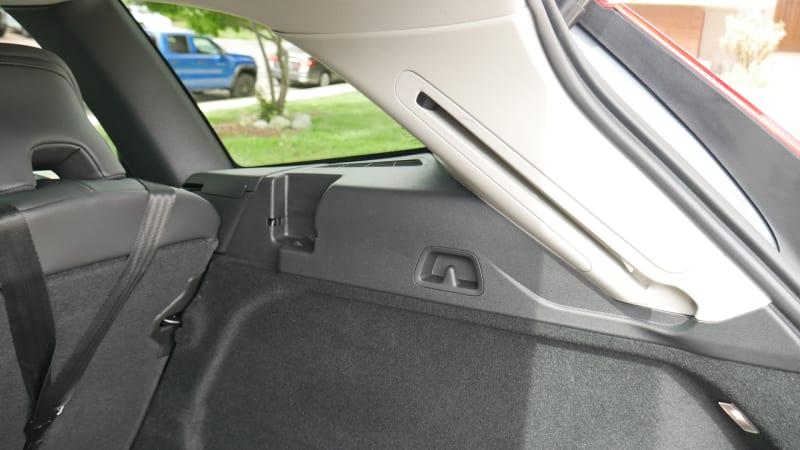
Yet another test car did not come with the cargo cover. Either other journalists are stealing these (I wouldn’t put it past some of them) or I’m starting to get paranoid that car companies are requesting the covers be taken out before getting dropped off with me. Nevertheless, it’s pretty obvious where the cartridge goes.
As such, I’ll test with and without the cargo cover, even if it’s imaginary.
As with every luggage test, I use two midsize roller suitcases that would need to be checked in at the airport (26 inches long, 16 wide, 11 deep), two roll-aboard suitcases that just barely fit in the overhead (24L x 15W x 10D), and one smaller roll-aboard that fits easily (23L x 15W x 10D). I also include my wife’s fancy overnight bag just to spruce things up a bit (21L x 12W x 12D).
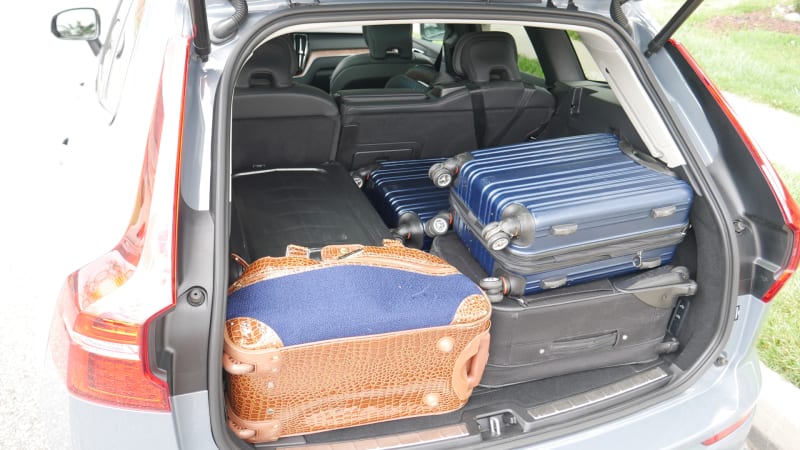
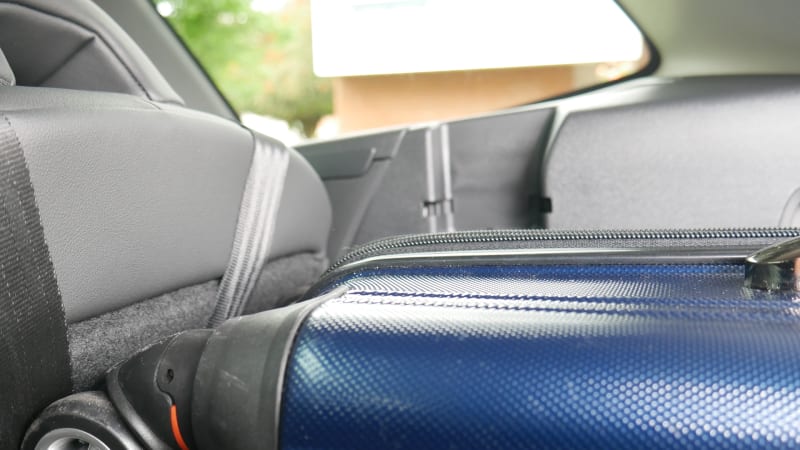
The biggest bags are too tall to fit on their sides (above right), but I could still fit all but one of the medium rollers with the imaginary cartridge in place. Now, given the amount of space left over, I’m virtually certain all the bags could fit with the cartridge just disconnected and placed on top. Of course, if I had the actual cartridge, I could tell you one way or another …
Let’s toss out the imaginary cargo cover.
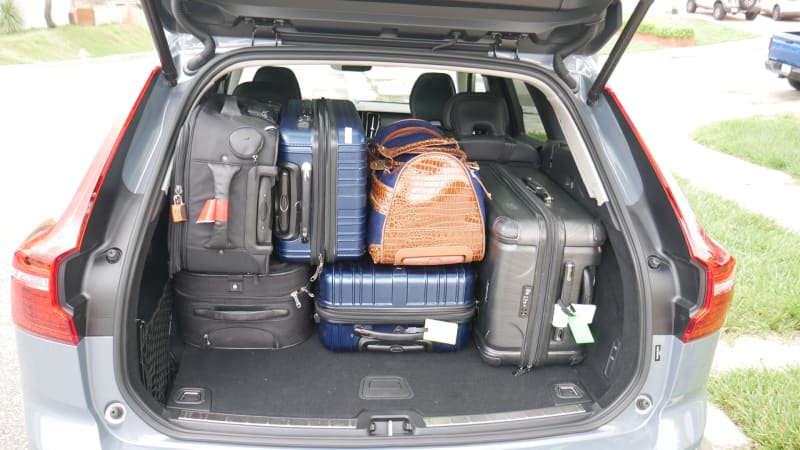
Not surprisingly given the 25.8-cubic-foot number, even with the Recharge reduction, all the bags fit neatly with a fair amount of space leftover for a duffle bag or two.
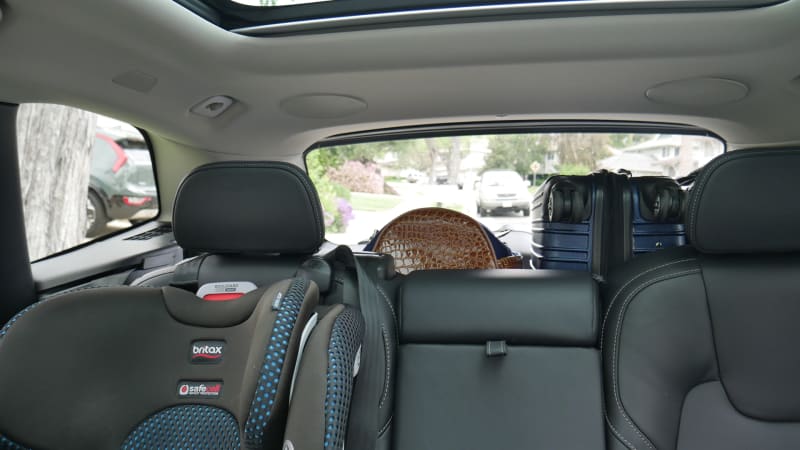
The two rollers are placed a little high, but visibility is still maintained. There was another Tetris I did that maintained more visibility, but it was squishier, and if I were loading the car for a trip, I’d be totally fine with this.
Even with the Recharge penalty, this amount of bags and leftover space is just a bit better than the various competitors I’ve tested: Genesis GV70, Alfa Romeo Stelvio Quadrifoglio, Audi Q5 PHEV, previous-generation Mercedes GLC and the BMW X3 with spare tire (yes that caveat matters). The Acura RDX remains the king of the luggage-hauling hill by a wide margin.
Interestingly, though, it’s basically the same as the Volvo V60 Cross Country wagon and greatly inferior to the Volvo V90 Cross Country.



